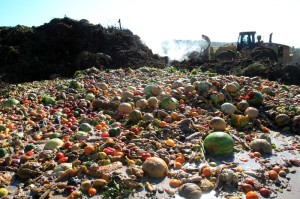 Why choose ‘Natural Sunscreen’? According to the non-profit Environmental Working Group (EWG), the United States has no clear rules governing the use, marketing and formulation of sunscreen. “And as a result we were seeing some really misleading and unsafe products on the market,” said Senior EWG analyst Sonya Lunder.
Why choose ‘Natural Sunscreen’? According to the non-profit Environmental Working Group (EWG), the United States has no clear rules governing the use, marketing and formulation of sunscreen. “And as a result we were seeing some really misleading and unsafe products on the market,” said Senior EWG analyst Sonya Lunder.
It is alarming to see the research that confirms many traditional sunscreens use potentially toxic chemicals, synthetic preservatives, colors, and fragrances that generate free radicals which leads to early skin aging and non-melanoma skin cancer.
“In our opinion there are some ingredients that are pretty widely used in sunscreens that we’re concerned about or think shouldn’t be in [it],” Lunder said.
Anything coming in constant contact with your skin will land in your bloodstream for distribution throughout your body. Chemicals ON your skin may actually be worse than digesting them because they are absorbed immediately and go directly to your delicate organs. This makes it even more critical that we protect ourselves and our families from the dangers of toxic sunscreens.
You may have heard the saying, “if you can’t pronounce it, then don’t eat it”. The same goes for not using lotions, gels, creams, etc. with ‘foreign’ ingredients.
So, what ‘toxic’ ingredients are used?
The common ingredient the EWG is wary of is retinylpalmitate, a form of vitamin A added to sunscreen as an antioxidant.
“Federally funded research found that when you add this form of vitamin A to a skin cream and then put it on mice and expose them to UV radiation, they have higher rates of skin damage, skin tumours and lesions,” Lunder said. “And this is because the ingredient breaks down to a phototoxic ingredient that’s harmful to the skin.”
EWG looks at active and inactive ingredients in sunscreen, rates formulations for their ability to protect skin from UVA and UVB rays, looks at stability of ingredients and checks for allergens and potentially dangerous chemicals. Check out how your sunscreen fared here.
Want an easy alternative?
MAKE YOUR OWN SUNSCREEN
Seriously!! We found this easy recipe from wellnessmama.com:
All ingredients have a natural SPF; unfortunately, since this is a homemade recipe and has not been tested by a regulatory organization, we can’t make any claims as to the combined SPF. However, the individual ingredients that are naturally SPF are:
- Zinc Oxide SPF 2-20 (depending on how much used)
- Coconut Oil SPF 4-6
- Red Raspberry Seed Oil SPF 25-50
- Carrot Seed Oil SPF 35-40
- Shea Butter SPF 4-6
*For a simpler version for moderate exposure, mix coconut oil and shea butter with; a little Raspberry Seed and Carrot Seed Oil or some Zinc oxide.*
As always check with your doctor or dermatologist before using any new products.
Ingredients:
- 1/4 cup coconut oil (natural SPF 4)
- 2 Tablespoons Zinc Oxide (This is a non-nano version that won’t be absorbed into the skin. Be careful not to inhale the powder). This makes a natural SPF of 20+ or more can be added.)
- Optional: up to 1 teaspoon Red Raspberry Seed Oil
- Optional: up to 1 teaspoon Carrot Seed Oil
- Optional: up to 1 teaspoon Vitamin E oil
- Optional: 2 tablespoons Shea Butter (natural SPF 4-5)
- Optional: Essential Oils, Vanilla Extract or other natural extracts to suit your preference
How to:
 Combine ingredients except zinc oxide in a pint sized or larger glass jar. (Great repurpose use for a former spaghetti sauce jar!) Fill a medium saucepan with a couple inches of water and place over medium heat.
Combine ingredients except zinc oxide in a pint sized or larger glass jar. (Great repurpose use for a former spaghetti sauce jar!) Fill a medium saucepan with a couple inches of water and place over medium heat.- Put a lid on the jar loosely and place in the pan with the water.
- As the water heats, the ingredients in the jar will start to melt. Shake or stir occasionally to incorporate. When all ingredients are completely melted, add the zinc oxide, stir in well and pour into whatever jar or tin you will use for storage.
- Stir a few times as it cools to make sure zinc oxide is incorporated.
 Use as you would regular sunscreen. Best if used within six months!
Use as you would regular sunscreen. Best if used within six months!
NOTE:
- This sunscreen is somewhat, but not completely, waterproof and will need to be reapplied after sweating or swimming
- Make sure not to inhale the Zinc Oxide- use a mask if necessary!
- This recipe has an SPF of about 15-20, though adding more Zinc Oxide will increase the SPF
- Beeswax can be added as a thickener if desired
- Store in a cool, dry place or in the fridge (will melt in warm environment so make sure to shake container before opening).
*Hey, let’s work together in fighting for a greener planet and healthier eating! Sign up at www.koecolife.com and receive valuable coupons, tips, & product updates. Be sure to follow us on Facebook and twitter for our latest news and events too.





